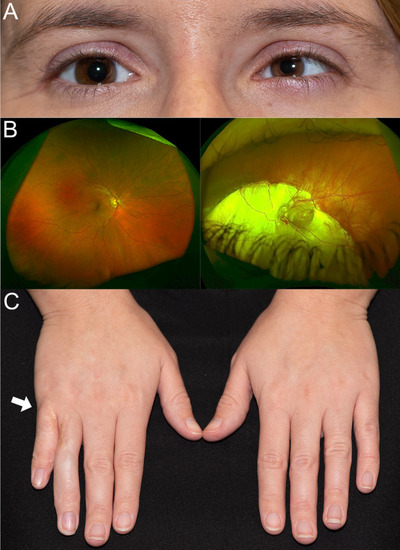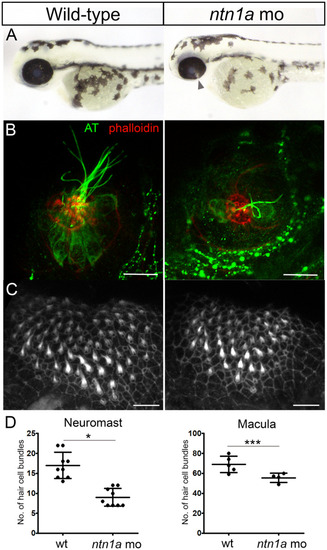- Title
-
A Novel De Novo Missense Variant in Netrin-1 (NTN1) Associated With Chorioretinal Coloboma, Sensorineural Hearing Loss and Polydactyly
- Authors
- Toms, M., Heppell, C., Owen, N., Malka, S., Moosajee, M., Genomics England Research Consortium
- Source
- Full text @ Clin. Genet.
|
Clinical features of the patient with a heterozygous missense variant c.1483T>A p.(Tyr495Asn) in |
|
Ocular coloboma and sensory hair cell defects in |


